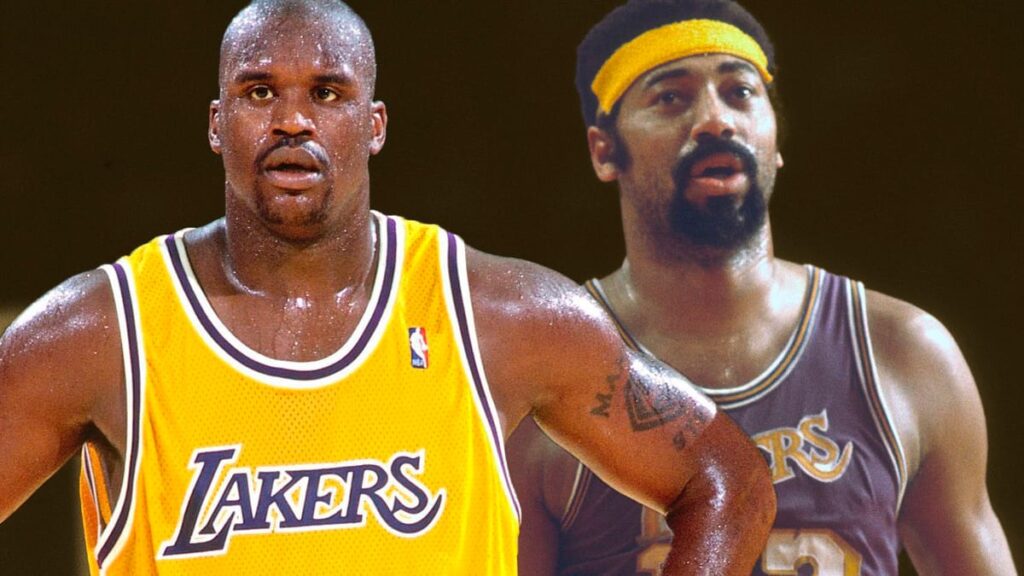The Ultimate Dominance Debate: Shaquille O’Neal vs Wilt Chamberlain
Two decades have passed since Shaquille O’Neal’s thunderous dunks shattered backboards and opposing teams’ hopes, yet the basketball world continues to grapple with one of its most contentious debates: whether the “Big Diesel” truly surpassed the legendary dominance of Wilt “The Stilt” Chamberlain. While O’Neal’s four championship rings gleam as testament to his team success and his ability to literally destroy basketball rims became the stuff of legend, Chamberlain’s otherworldly statistical achievements, including his mythical 100-point game, continue to cast a long shadow over any discussion of basketball supremacy. The question of who deserves the crown as history’s most dominant player remains tantalizingly unanswered, and the answer might surprise even the most dedicated basketball purists.
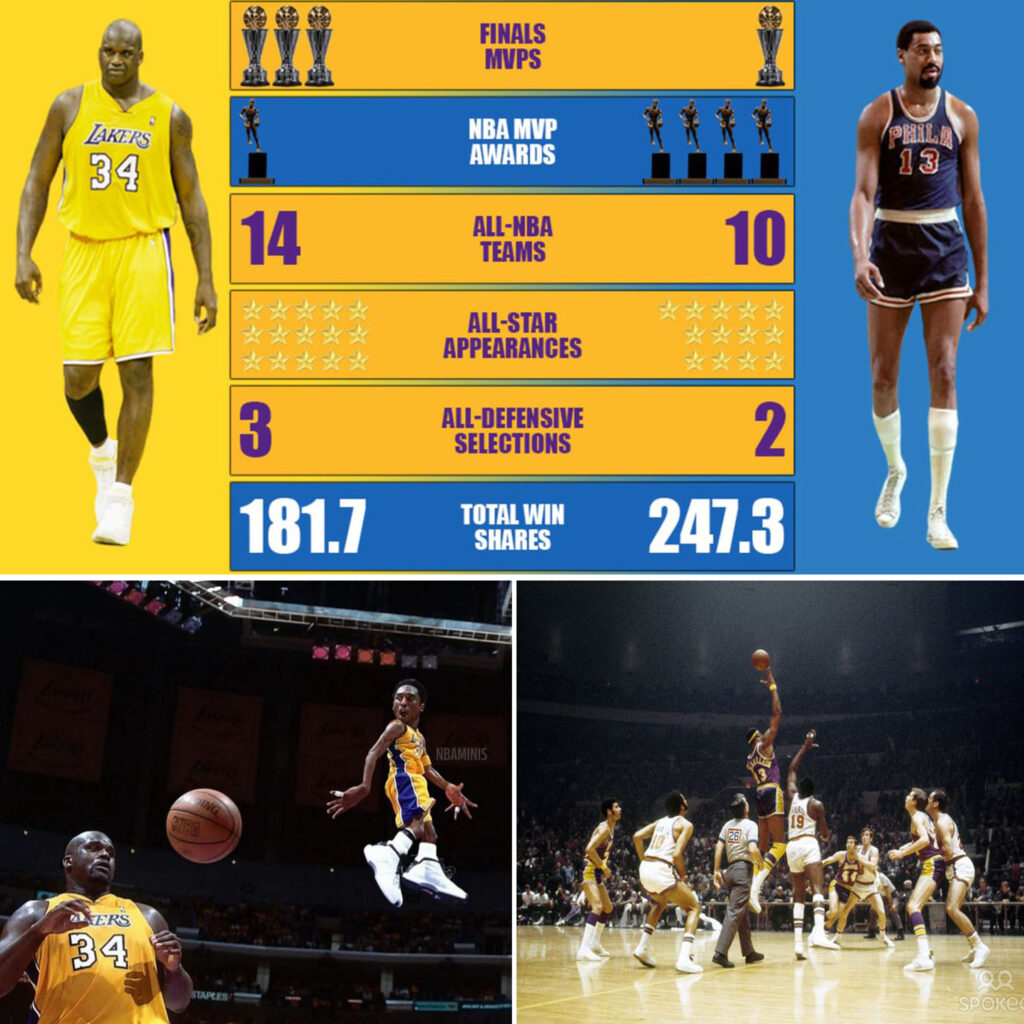
When examining pure physical dominance, both titans commanded the paint in ways that fundamentally altered how opponents approached the game, yet their methods of destruction differed dramatically in execution and era-specific impact. Shaquille O’Neal’s 7’1″, 325-pound frame moved with surprising agility and devastating power, creating a combination of size, strength, and athleticism that proved virtually unstoppable during his prime years with the Los Angeles Lakers from 2000 to 2002. His ability to overpower defenders, draw double and triple teams, and finish with authority at the rim forced the NBA to reinforce backboard standards and led to rule changes regarding defensive strategies. Chamberlain, standing 7’1″ but weighing around 275 pounds in his playing days, possessed a more diverse skill set that included exceptional speed, coordination, and an surprisingly soft shooting touch that allowed him to dominate through finesse as much as brute force.
The statistical comparison between these two giants reveals a fascinating dichotomy between individual brilliance and team accomplishment that highlights the eternal tension in sports between personal greatness and collective success. Wilt Chamberlain’s numbers read like fantasy basketball statistics: 50.4 points per game in the 1961-62 season, 27.2 rebounds per game career average, and that legendary 100-point performance against the New York Knicks that stands as perhaps the most unbreakable record in professional sports history. His dominance was so complete that the NBA widened the lane from 12 to 16 feet specifically to limit his effectiveness, and he remains the only player to average over 40 points and 20 rebounds for an entire season multiple times. Shaquille O’Neal’s peak statistical years, while impressive with averages of 29.7 points, 13.6 rebounds, and 3.8 blocks per game during his MVP season, pale in comparison to Chamberlain’s raw numbers but tell a different story of sustained excellence and playoff performance.
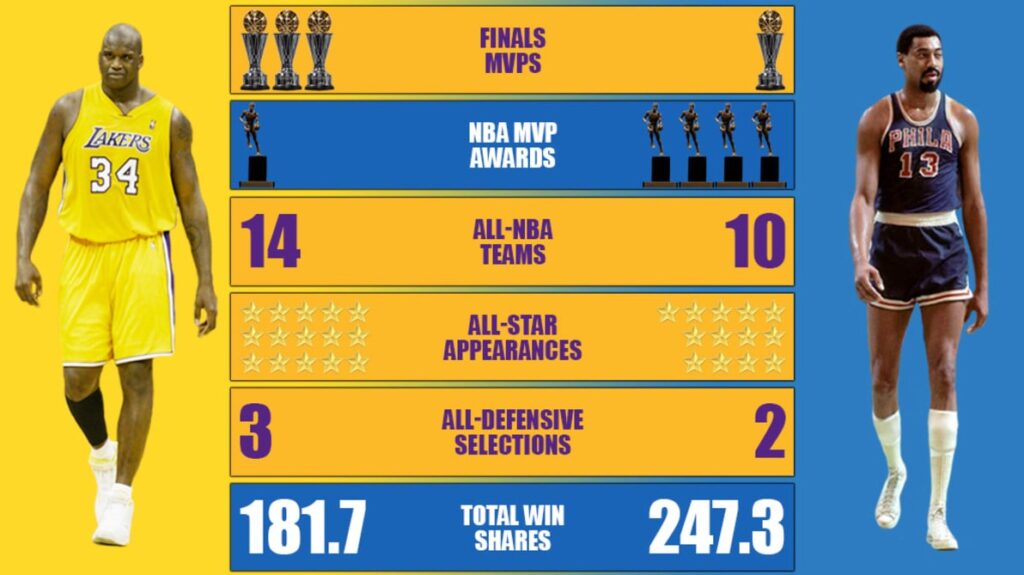
However, the championship argument strongly favors O’Neal, whose four NBA titles with two different franchises demonstrate an ability to elevate his game when it mattered most and lead teams to the ultimate prize in basketball. During the Lakers’ three-peat from 2000-2002, Shaq dominated the playoffs with performances that many consider the most unstoppable in NBA Finals history, averaging 36.3 points and 12.3 rebounds while shooting an remarkable 59.5% from the field across those three championship runs. His Finals MVP awards in each of those years underscore his ability to perform under the brightest lights, something that distinguished him from Chamberlain, who won only two championships despite his statistical dominance. Wilt’s playoff struggles, including his team’s frequent inability to overcome Bill Russell’s Boston Celtics dynasty, have long been cited as evidence that individual statistics don’t always translate to winning basketball at the highest level.
The era factor complicates any direct comparison, as Chamberlain played in a fundamentally different NBA where the pace was faster, competition was arguably less deep, and the overall skill level of players was still developing compared to the modern era. Critics argue that Wilt’s astronomical numbers were inflated by playing against smaller, less athletic centers in an era when professional basketball was still finding its identity, while defenders counter that his dominance was so complete that it transcended any era-specific advantages. Shaquille O’Neal, conversely, dominated during what many consider the golden age of NBA centers, going head-to-head with Hall of Fame big men like David Robinson, Hakeem Olajuwon, Tim Duncan, and Alonzo Mourning, proving his superiority against elite competition night after night.
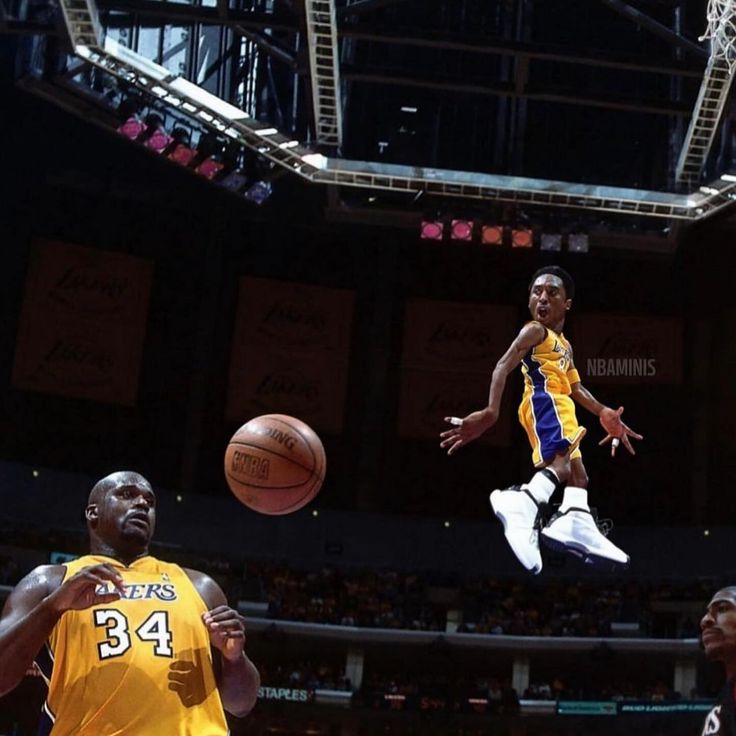
The psychological impact and fear factor generated by both players represents another crucial dimension of dominance that extends beyond mere statistics or championship counts to encompass their ability to alter opponents’ entire game plans and strategies. Teams facing Shaquille O’Neal often resorted to “Hack-a-Shaq” strategies, deliberately fouling him to exploit his poor free-throw shooting, which paradoxically demonstrated both his dominance and his vulnerability while fundamentally changing the rhythm and flow of games. Chamberlain’s presence similarly forced opponents to adjust their offensive and defensive schemes, with teams often employing multiple defenders to slow him down, though his superior conditioning and stamina frequently wore down opponents over the course of 48 minutes.
The legacy question ultimately transcends basketball statistics and enters the realm of cultural impact, where both players revolutionized how we think about size, athleticism, and dominance in professional sports. Shaquille O’Neal’s larger-than-life personality, combined with his on-court dominance, made him a global icon who transcended basketball to become an entertainment figure, while his business acumen and post-playing career success have cemented his status as a complete success story. Wilt Chamberlain’s mystique, enhanced by stories of his incredible athleticism, rumored track and field abilities, and claims of superhuman strength, created a legend that has only grown with time, making him basketball’s most mythological figure.
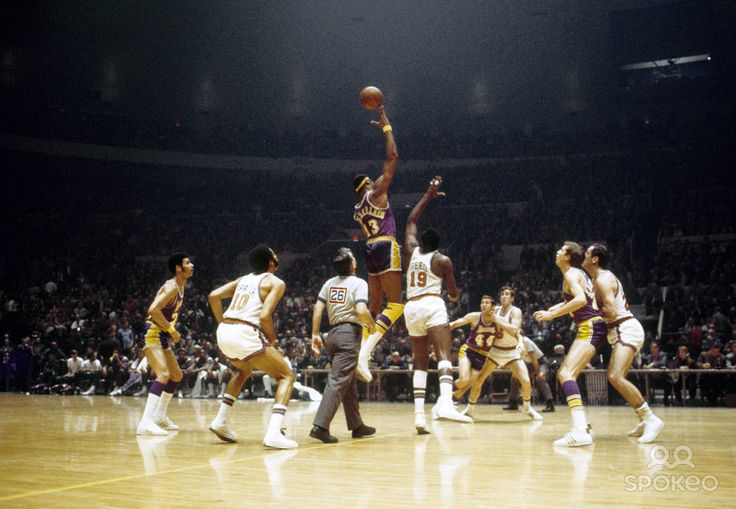
Perhaps the most honest assessment is that both players represented the absolute pinnacle of dominance in their respective eras, with their greatness manifesting in different ways that reflected the unique circumstances and challenges of their times. While Chamberlain’s statistical dominance remains unmatched and likely unmatchable, O’Neal’s combination of individual brilliance and championship success represents a more complete basketball legacy that many analysts favor when forced to choose. The debate ultimately reveals more about what we value in athletic greatness—pure statistical dominance versus championship success, individual brilliance versus team leadership, era-adjusted performance versus raw numbers—than it resolves the question of ultimate supremacy.
The answer to who was more dominant may indeed surprise basketball fans, as it depends entirely on how one defines dominance itself: was it Chamberlain’s statistical revolution that forever changed how we measure basketball greatness, or O’Neal’s championship-winning formula that proved dominance means nothing without the rings to show for it?
